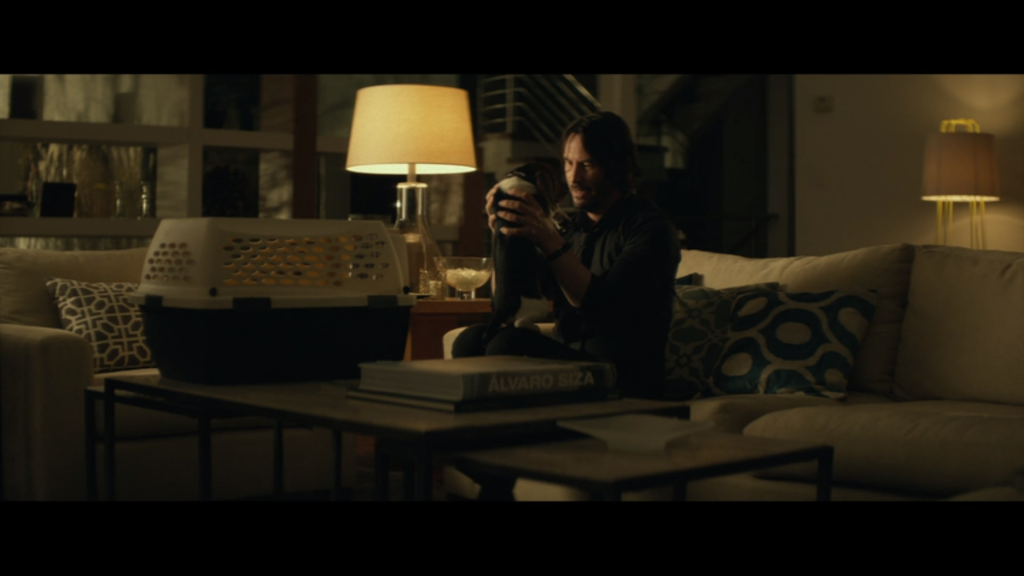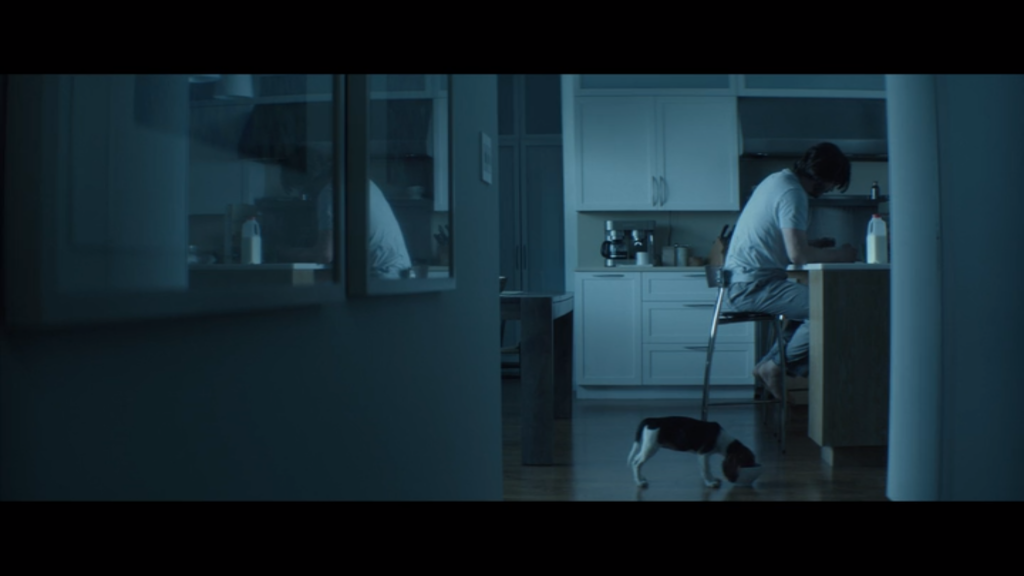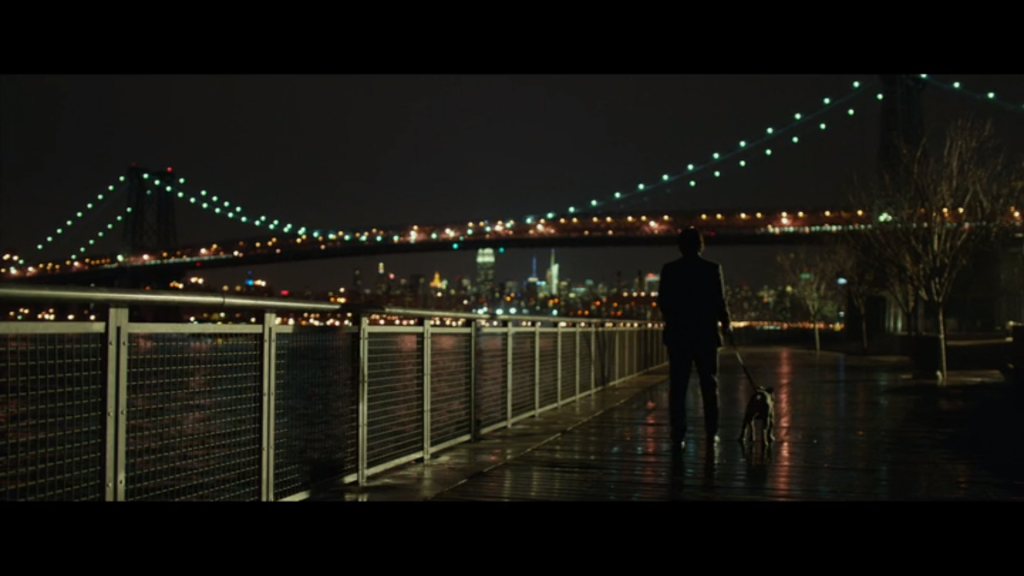John Wick is an exploration of domesticated animals and their hierarchical standing. The entire narrative centres around a revenge plot following the killing of Wick’s dog. It raises important questions of domestication, anthropomorphism, and worth.
Following the opening montage of scenes detailing the loss of Wick’s wife, he is shown to have been given a puppy as a gift from her. This basis of ownership immediately sets up the importance of the puppy to Wick; the passing down of the dog from his late wife creates a bond before the two have even interacted. Colouring in the scenes also plays an important role in reflecting Wick’s character; the loss montage is hued in blues, which cuts to warmer yellows once Wick receives the puppy. The warmth emphasises the importance of the dog to Wick’s happiness and wellbeing.
The pedestal Wick places the puppy upon is anthropomorphism following loss; his wife is no longer around and he sees the dog as a symbolic personification of human love; a product of his romantic relationship. This anthropomorphism is further demonstrated when Wick attempts to care for the puppy; he is unaware of the protocols of owning a pet. Wick’s incompetence is a reminder of the power humans believe themselves to have over other animals; pets are, in essence, commodification of a sentient beings’ life. This relationship between Wick and the puppy is perfectly summarised in the scene where he attempts breakfast; unprepared for his new position of responsibility, he fails to recognise the innate differences between human and pet care when he gives the dog a breakfast of cereal identical to his own.
The return to the blue hues in this scene, albeit lighter shades than the loss montage, reflects Wick’s apprehension in caring for the dog; they return to blue because of his trepidation, but remain lightened because of his optimism. This scene, however, also demonstrates the importance and value placed upon the dog; he treats it as he would a human because he doesn’t know better, but also because he sees it as an equal.
Although the narrative follows Wick’s dedication to the puppy, breaking laws to get revenge, the ending sees Wick get a new dog. Though shown a positive action of moving on, its cyclicality demonstrates the replaceable nature of pets; despite the entire plot being Wick’s anger and upset at the loss of his dog, he simply picks up a new one.
Though John Wick works as an exploration of the perhaps innate human need for animal companionship, it also highlights the commodification of such; a pet dies and, though we are sad, we simply replace it. However, this replacement serves to show Wick’s understanding that one specific animal cannot replace his wife; the pedestal he placed his first dog on is worked through, and by the end his character appears to understand dogs to be a companion; not a replacement. Though pets are placed on a higher standing than, say, livestock, the simple idea of an animal hierarchy remains. Pets may be more important than food, but they are still deemed inferior, whether subconsciously or not.


